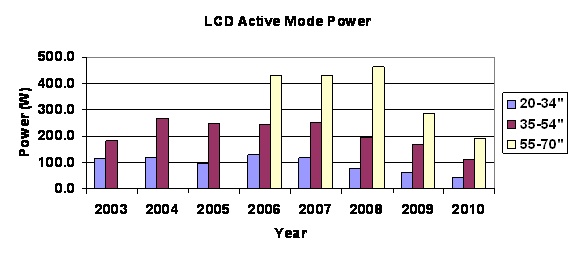Why the CEA wants you to buy a digital TV: Energy efficiency

I'm betting that many of you have very specific requirements for watching the Super Bowl on Sunday: many of you will seek to hunker down in front of the biggest, brightest, real-est television screen you can find.
What about the one that sucks up the least power?
Along those lines, you've got to love the timing for the release of a new study from the Consumer Electronics Association (CEA) that analyzes the energy efficiency of the latest digital televisions.
The study, called "Power Consumption Trends in Digital TVs Produced Since 2003," looks at power consumption metrics for popular LCD and plasma display products released between 2003 and 2010. It studies both the active mode and stand-by mode, and considers screen sizes ranging from 13 inches to 65 inches. There were dramatic decreases reported for both. Average active power requirements for LCD models, for example, were reduced by 63 percent. Meanwhile, the average power consumed by a plasma TV in active mode was off 41 percent between 2008 and 2010.
The chart below shows the LCD usage patterns. CEA expects LCD models to account for 82 percent of all TV display sales in 2011, about 27.1 million units. Its projection for plasma models is 4.6 million units.
Here's a stat from CEA that puts things into perspective: The average TV sold in 2010 now uses less energy than it takes for a 100-watt incandescent light bulb to illuminate the average living room in which the average American is going to watch the Super Bowl on Sunday.
The CEA predicts things will get even better with the next wave of digital TVs, which use light emitting diodes, or LEDs,
